Whole-Systems Approach to Community Living – One Community Weekly Progress Update #204
An open source and free-shared whole-systems approach to community living could change the way people look at both sustainability and community living. One Community is designing this to include food, energy, housing, education, for-profit and non-profit economic design, social architecture, fulfilled living, global stewardship practices, and more.
- Here’s our project overview
- Here’s our world-change methodology
- Here’s how this becomes self-replicating
- Here’s how we are open source and free-sharing all the do-it-yourself designs

OUR MAIN OPEN SOURCE HUBS
Click on each icon to be taken to the corresponding Highest Good hub page.
One Community’s physical location will forward the movement of whole-systems approach to community living as the first of many self-replicating teacher/demonstration communities, villages, and cities to be built around the world. This is the February 19th, 2017 edition (#204) of our weekly progress update detailing our team’s development and accomplishments:
Whole-Systems Approach to Community Living
One Community Progress Update #204
Here is the bullet-point list of this last week’s design and progress discussed in detail in the video above:
WHOLE-SYSTEMS APPROACH TO COMMUNITY LIVING INTRO: @1:03
WHOLE-SYSTEMS APPROACH TO COMMUNITY LIVING HIGHEST GOOD EDUCATION: @1:
- Transferred all of written content for the Reality Lesson Plan to the website (see below)
- Behind the scenes: completed 100% of the written part of the Fulfilled Living Lesson Plan
- Completed the second 50% of the mindmap for the Sharing Lesson Plan (see below)
- Continued creation of renders for The Ultimate Classroom (see below)
- Sangam Stanczak joined the team and completed several weeks of cost analysis and hours of additional research for the Learning Tools and Toys component (see below)
WHOLE-SYSTEMS APPROACH TO COMMUNITY LIVING HIGHEST GOOD FOOD: @2:
- Ashwin Patil continued with his 18th week developing the new Search Engines for our site (see below)
WHOLE-SYSTEMS APPROACH TO COMMUNITY LIVING HIGHEST GOOD HOUSING: @3:
- Updated several pages in the 7 villages online book and began reviewing where we left off with the DIY Murphy Bed construction instructions (see below)
- Completed final edits to this Tropical Atrium render and added it to the Earthbag Village and Tropical Atrium pages (see below)
- Created final render of the Communal Eco-shower Structure for the Earthbag Village and final render of the Communal Eco-shower Structure section view (see below)
- Alena Thompson completed her 2nd week helping with the Net-zero Communal Bathroom Designs (see below)
- Christian Ojeda completed his 3rd week helping with the heat-recycling Communal Eco-shower designs (see below)
- Adrienne Gould-Choquette finished her 9th week helping create the standardized AutoCAD layers and line-weights template and tutorial (see below)
- Fernando Remolina continued with his 13th week of managing the Vermiculture Bathroom development with the 8th week of help from Lin Xu (see below)
- Dean Scholz continued helping us create quality Cob Village (Pod 3) renders (see below)
- Adding details to Dean’s previous work, Guy Grossfeld added people and nature elements to create two new views of the Cob Village Roof View (see below)
- Jiming Chen continued helping develop the Tree House Village (see below)
- Hamilton Mateca finished his 31st week helping with the Compressed Earth Block Village design details (see below)
- Aparna Tandon continued her work on the Compressed Earth Block Village external elements (see below)
WHOLE-SYSTEMS APPROACH TO COMMUNITY LIVING DUPLICABLE CITY CENTER: @6:
- Dipti Dhondarkar continued with her 27th week of work on the lighting specifics for the City Center (see below)
- Guy Grossfeld helped us create the updated and final render of one of the City Center rental rooms (see below)
- Jinxi Feng continued her research helping us create an in-depth washing machine sustainability analysis (see below)
- Haoxuan “Hayes” Lei and Shuna Ni continued their work on the City Center structural engineering (see below)
- Ramya Vudi working with the guidance of Mike Hogan worked on the energy infrastructure for the City Center (see below)
- Jin Yu completed her 5th week working on the concrete foundation design and tutorial details for the Duplicable City Center (see below)
WHOLE-SYSTEMS APPROACH TO COMMUNITY LIVING HIGHEST GOOD SOCIETY: @8:
- Finished another round of developing the new Highest Good education video (see below)
WHOLE-SYSTEMS APPROACH TO COMMUNITY LIVING SUMMARY: @8:
-
-
- How you can most help us right now and how anyone can help
-
CLICK HERE IF YOU’D LIKE TO RECEIVE AN EMAIL EACH WEEK WHEN WE RELEASE A NEW UPDATE
YOU CAN ALSO JOIN US THROUGH SOCIAL MEDIA
ONE COMMUNITY WEEKLY UPDATE DETAILS
WHOLE-SYSTEMS APPROACH TO COMMUNITY LIVING HIGHEST GOOD EDUCATION PROGRESS
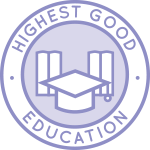 One Community is facilitating a whole-systems approach to community living through Highest Good education that is for all ages, applicable in any environment, adaptable to individual needs, far exceeds traditional education standards, and more fun for both the teachers and the students:
One Community is facilitating a whole-systems approach to community living through Highest Good education that is for all ages, applicable in any environment, adaptable to individual needs, far exceeds traditional education standards, and more fun for both the teachers and the students:
-
-
- Learn about the components: Education open source hub
- Learn how the components work together: How to use the Education for Life Program
-
This last week the core team transferred all of the written content for the Reality Lesson Plan to the website, as you see here. This lesson plan is purposed to teach all subjects, to all learning levels, in any learning environment, using the central theme of “Reality”.
Behind the scenes, we completed 100% of the written part of the Fulfilled Living Lesson Plan.
We also completed the second 50% of the mindmap for the Sharing Lesson Plan, bringing it to 100% complete, which you see here:
In addition, the core team continued creation of renders for The Ultimate Classroom. We finished rendering updates for the indigo room:
…..and started adding missing items and updating textures for the red room:
Last but not least, Sangam Stanczak (Ph.D. and P.E.) joined the team and completed several weeks of cost analysis (top pic) and hours of additional research for the Learning Tools and Toys component. You can see screenshots of all this behind-the-scenes work here:
WHOLE-SYSTEMS APPROACH TO COMMUNITY LIVING HIGHEST GOOD FOOD PROGRESS
 One Community is facilitating a whole-systems approach to community living through Highest Good food that is more diverse, more nutritious, locally grown and sustainable, and part of our open source botanical garden model to support and share bio-diversity:
One Community is facilitating a whole-systems approach to community living through Highest Good food that is more diverse, more nutritious, locally grown and sustainable, and part of our open source botanical garden model to support and share bio-diversity:
-
-
- Learn about the structures: Hoop House Hub | Aquapini & Walipini Open Source Hub
- See what we’ll be growing: Gardens & Hoop Houses | Large-scale Structures | Food Forest | TA
-
Ashwin Patil (Web Developer) continued with his 18th week developing the new Search Engines for our site. This week’s work was on the Highest Good Food search engine to integrate more edits to the names, add in the Open Source Botanical Gardens page and related pages, and begin working on the Walipini and Aquapini sections.
WHOLE-SYSTEMS APPROACH TO COMMUNITY LIVING HIGHEST GOOD HOUSING PROGRESS
 One Community is facilitating a whole-systems approach to community living through Highest Good housing that is artistic and beautiful, more affordable, more space efficient, lasts longer, DIY buildable, and constructed with healthy and sustainable materials:
One Community is facilitating a whole-systems approach to community living through Highest Good housing that is artistic and beautiful, more affordable, more space efficient, lasts longer, DIY buildable, and constructed with healthy and sustainable materials:
-
-
- Learn about: Our Upcoming Crowdfunding Campaign
- Learn about the different village models: 7 Sustainable Village Models
- Visit the open source portals for the first two: Earthbag Village OS Hub | Straw Bale Village OS Hub
-
This week the core team updated several pages in the 7 villages online book. We also began reviewing where we left off with the DIY Murphy Bed construction instructions.
Then we completed final edits to this Tropical Atrium render (now with people doing yoga) and added it to the Earthbag Village and Tropical Atrium pages:
Alena Thompson (Mechanical Engineer) completed her 2nd week helping with the Net-zero Communal Bathroom Designs. This week she researched barrel options and eliminated this option based on space needs, came up with multiple reservoir alternatives, confirmed metal sheeting will work for the roof, and began researching water purification alternatives.
Christian Ojeda (Mechatronic Engineer) completed his 3rd week helping with the heat-recycling Communal Eco-shower designs. This week’s focus was the designs shown here for the central sink piping.
Adrienne Gould-Choquette (Mechanical Engineer) also finished her 9th week helping create the standardized AutoCAD layers and line-weights template and tutorial. This week’s focus was adding pictures and additional edits to create 2.0 of the AutoCAD layers and line-weights tutorial, as shown here.
Fernando Remolina (Industrial Engineer specializing in Project Management) continued with his 13th week of managing the Vermiculture Bathroom development with the 8th week of help from Lin Xu (Mechanical Engineering Student). This week’s focus, as shown here, was on the removable compost receptacle attachments and new approaches to emptying and cleaning.
And Dean Scholz (Architectural Designer), continued helping us create quality Cob Village (Pod 3) renders. Here is update 56 of Dean’s work focusing this week on the Eastside living spaces:
…this final render of the Westside Living Space Upstairs View:
… and this final render of the Section View of the Westside Living Spaces Looking North:
Adding details to Dean’s previous work, Guy Grossfeld (Graphic Designer) added people and nature elements to create these two new views of the Cob Village Roof View Looking Southeast:
…. and this Roof View Looking North.
Jiming Chen (Designer with his Master’s in Architecture and BA in Engineering) also continued helping develop the Tree House Village (Pod 7). What you see here is his 13th week of this work focusing on applying last week’s color choices and test rendering each of the different tree house structures shown here:
….also this next-generation render of the complete village.
Hamilton Mateca (AutoCAD and Revit Drafter and Designer) also finished his 31st week helping with the Compressed Earth Block Village (Pod 4) design details. This week’s focus was more updates to the kitchen textures and design testing more lighting strategies for the living spaces.
Aparna Tandon (Architect) additionally continued her work on the Compressed Earth Block Village external elements. What you see here is her 16th week of work, focusing on updating layers to match the new template and continued development of the details in front of the East wing and inside the left wing, as shown here.
WHOLE-SYSTEMS APPROACH TO COMMUNITY LIVING DUPLICABLE CITY CENTER PROGRESS
 One Community is facilitating a whole-systems approach to community living through a Duplicable and Sustainable City Center that is LEED Platinum certified/Sustainable, can feed 200 people at a time, provide laundry for over 300 people, is beautiful, spacious, and saves resources, money, and space:
One Community is facilitating a whole-systems approach to community living through a Duplicable and Sustainable City Center that is LEED Platinum certified/Sustainable, can feed 200 people at a time, provide laundry for over 300 people, is beautiful, spacious, and saves resources, money, and space:
-
-
- Learn about this building and it’s function: Duplicable City Center Open Source Hub
-
This week Dipti Dhondarkar, (Electrical Engineer) continued with her 27th week of work on the lighting specifics for the City Center. This week’s focus was beginning the process of learning how to use the Dialux software to model the City Center Living Dome bathrooms and begin lighting testing.
In addition to this, Guy Grossfeld (Graphic Designer) helped us create this updated and final render of one of the City Center rental rooms.
And Jinxi Feng (Environmental Consultant) continued her research helping us create an in-depth washing machine sustainability analysis. What you see here is her 22nd week of behind-the-scenes work on this area of the project. This week’s focus was more content creation and updating the graphics and numbers for water savings. The core team also continued editing and formatting last week’s content on the eco-laundry page on the site. A collage of all of this is shown here.
Haoxuan “Hayes” Lei (Structural Engineer) and Shuna Ni (Masters of Mechanical Engineering and Civil Engineering PhD) also continued their work on the City Center structural engineering. This week’s focus was continued more roof design updates and working on the flange specifics and best lengths for the main column sections to be able to be constructed without heavy machinery.
Ramya Vudi (Electrical Engineer) working with the guidance of Mike Hogan (Automation Systems Developer and Business Systems Consultant) worked on the energy infrastructure for the City Center. This week’s work focused on the initial wiring layouts shown here.
Jin Yu (Structural Engineering Designer) also completed her 5th week working on the concrete foundation design and tutorial details for the Duplicable City Center. This week’s focus was this behind-the-scenes tutorial explaining the engineering of column spread footings with an example that includes all the calculations of footings that are used, as shown here.
WHOLE-SYSTEMS APPROACH TO COMMUNITY LIVING HIGHEST GOOD SOCIETY PROGRESS
 One Community is facilitating a whole-systems approach to community living through a Highest Good society approach to living that is founded on fulfilled living, the study of meeting human needs, Community, and making a difference in the world:
One Community is facilitating a whole-systems approach to community living through a Highest Good society approach to living that is founded on fulfilled living, the study of meeting human needs, Community, and making a difference in the world:
-
-
- Read the Highest Good society overview: Highest Good Society
- Learn about the model for fulfilled living and sharing: A Day in the Life
- Learn about the 4 economic models: RBE | For-profit | Non-profit | Entrepreneurship
- Learn about our open source community collaboration and management software: The Highest Good Network
-
This week the core team finished another round of developing the new Highest Good education video. What you see here are a couple different proposed layouts for the lesson plans graphic.
AND WE PRODUCED THIS WEEKLY UPDATES BLOG – CLICK HERE TO SUBSCRIBE
FOLLOW ONE COMMUNITY’S PROGRESS (click icons for our pages)
INVESTOR PAGES
GET INVOLVED
CONSULTANTS ● WAYS ANYONE CAN HELP ● MEMBERSHIP
CLICK HERE FOR ALL PAST UPDATES
ONE COMMUNITY’S 4-PHASE STRATEGY
One Community is building solution-creating models designed to create additional solution-creating models to specifically facilitate exponential and sustainable global teacher/demonstration village growth. The following four phases of the strategy we are applying are designed to support each other and accelerate the process of whole-systems approach to community living globally:
Phase I: Demonstrating a Better Way
We are designing One Community to demonstrate an experience of living that we believe most people will consider to be better because it will be more enjoyable and fulfilling. We also think most people will consider it better because it is made possible specifically through a foundation of sustainable sustainability and a philosophy that is for The Highest Good of All.
Phase II: Open Source Project-Launch Blueprinting
Everything we do we are open source project-launch blueprinting and free-sharing to make it as easy and affordable as possible to duplicate, adapt, and evolve in the manner that suits each individual and/or group’s needs. Free-sharing information like this is our aggressive-exposure engine and an aspect of One Community that will accelerate indefinitely as we continue to build our team, move onto the property, and continuously build and evolve everything that is One Community.
Phase III: Inviting the World to Participate
Everything we are open source project-launch blueprinting is designed to invite the world to participate by duplicating it as either individual components or complete teacher/demonstration communities, villages, and cities that will be able to be built almost anywhere in the world. Additionally, people can join One Community as members, consultants and/or partners, or use the suggestions links on our open source project-launch blueprinting hubs to help with the design, implementation, and evolution process. Scholarships, weekend learning and work crews, and tourism will be foundations of One Community once we have sufficient infrastructure in place to support these options. thereby helping the world by transitioning to the whole-systems approach to community living.
Phase IV: Universal Appeal and Global Expansion
As One Community continues evolving and establishing ourselves, everything we create and promote will serve as the engine to inspire people to align with the concept of open source and sustainable living for The Highest Good of All. We are doing this to create mainstream appeal and our path to achieving this appeal is demonstrating a happier, more affordable, and ecologically friendly model of living that can be built anywhere in the world.
Open source project-launch blueprinting it all is how we believe the model will spread and, possibly most importantly, that it will predictably spread even faster in the areas where it is needed most because building restrictions, the cost of land, and materials costs are in most cases lower in these areas.
WHY OPEN SOURCE
We are creating everything One Community does as open source and free-shared blueprints because we see this as the path to a new Golden Age of creativity, innovation, cooperation, and collaboration for all of humanity. Our model is a solution model that creates additional solution creating models enabling people to live and collaborate globally for The Highest Good of All. The easier we make everything we do, the faster we see the world transitioning to the whole-systems approach to community living.
Every aspect of this model supports itself and contributes to its success, from the sustainable food, energy, and homes, to the social architecture, One Community Education Program, and open source sharing model itself. Each piece can be accessed, evolved, and even re-birthed as something completely new. It can be duplicated by itself or with other modules, with applications as diverse as the people who want and need them. The constantly expanding total model will additionally be able to be used in its entirety as the open source project-launch blueprint for a variety of duplicate teacher/demonstration communities, villages, and cities capable of being built virtually anywhere.
The most profound part is: the more we open source share, the more we help move everyone forward, the more people know about what we are doing and can participate, and the more successful and capable we are of project-launch blueprinting and sharing even more still. This is all supported and made possible because:
- We have the team to produce an extensive quality and diversity of tools and resources
- It gives us the opportunity to broaden the concept of sustainability and make it more desirable
- Areas we open source expand our ability to evolve even faster through global collaboration
- Each new area open sourced expands our target audience, advancing our world changing goals
- The more we show our ability to share what we are creating, the more others will benefit and want to join this movement and mimic the part we are playing in it
OPEN SOURCE SHARING STRATEGY SPECIFICS
One Community’s open source strategy will evolve 5 primary types of open source content purposed to reach and service as broad an audience as possible and inch them towards whole-systems approach to community living. This includes the following mediums of sharing that are being developed to function as standalone resources or in combination with each other:
- Video tutorials
- Audio tutorials
- Live streaming video
- Direct/live interaction
- Written content and downloadable PDFs
Maximum exposure is accomplished through simultaneous implementation of the following strategies:
- Free-shared audio, visual, and PDF downloads
- Scholarship and intern programs for direct learning
- Videoing or live-streaming almost all classes and activities
- Tourism option for involvement in almost all aspects of One Community
- Dedicated and search engine optimized sections of our website for each key area
- Our established infrastructure that simultaneously posts to over 20 social networks
SUMMARY
One Community sees the issues of the world as interdependent and interconnected. To address them simultaneously, we are open-source blueprinting a more advanced standard of living by designing holistic, environmentally-regenerative, self-sustaining, adaptable solutions for all areas of sustainability. We will model these within a comprehensive “village/city” which will be built in the southwestern U.S. This teacher/demonstration hub will be a place people can experience a new way of living and then replicate it with our open source blueprints: creating a model solution that creates additional solution-creating models.
 One Community
One Community


















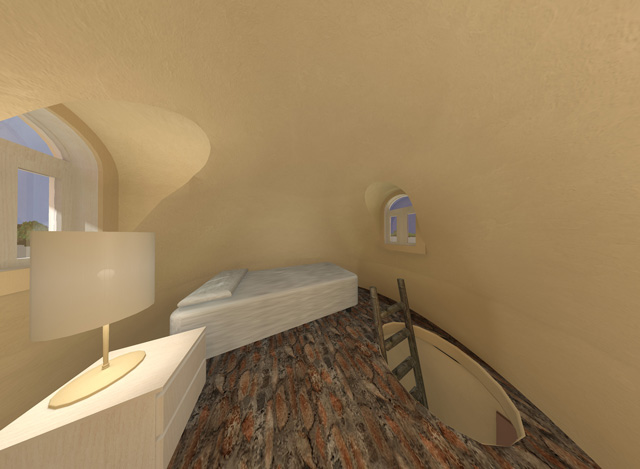

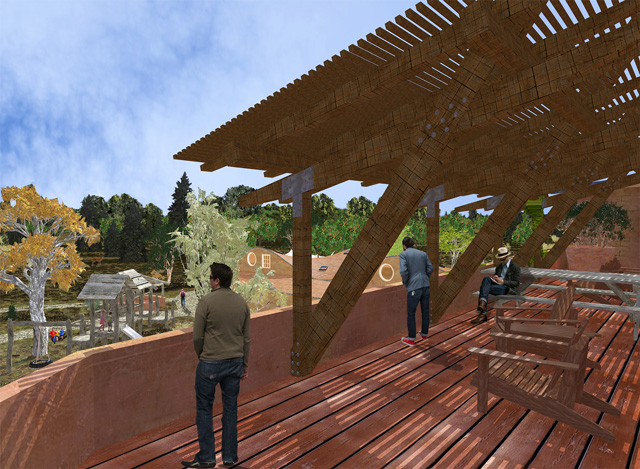






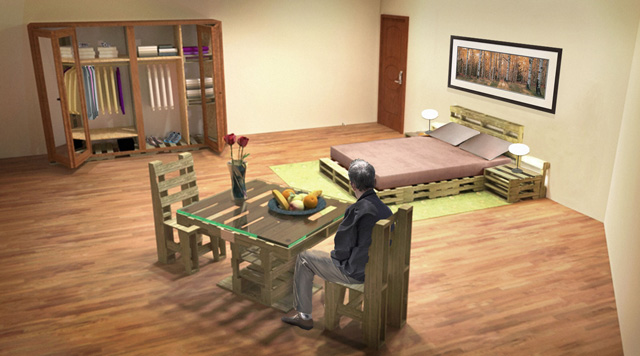
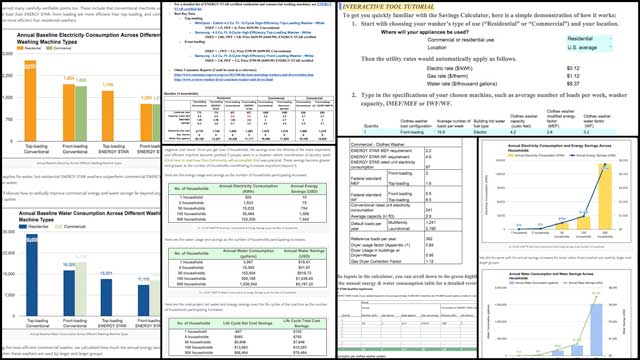




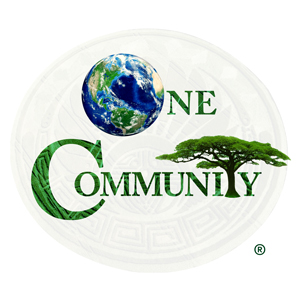


Connect with One Community